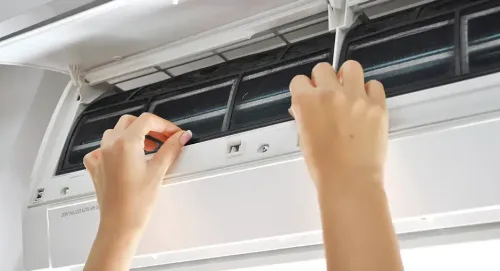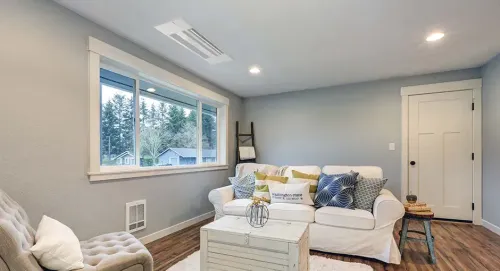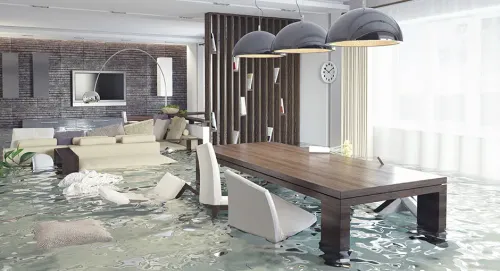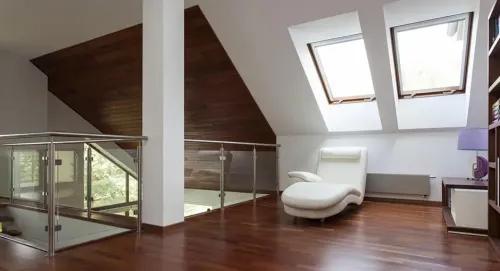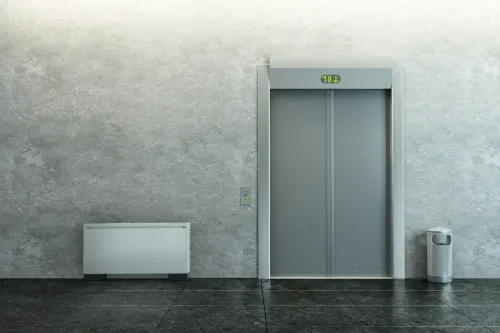How Concord Senior Living Community Achieved a Successful Renovation and Expansion While Maintaining Resident Comfort
Renovating senior housing properties can be both disruptive and costly. However, with the right products and meticulous planning, these challenges can be mitigated, especially when the contractor, facility owner, and design team are aligned on the project's goals.
A recent webinar, co-sponsored by Mitsubishi Electric Trane HVAC US (METUS) and Seniors® Housing Business, explored the partnership between the South Coast Improvement Company and the Volunteers of America Massachusetts (VOAMASS) to expand the existing 60,000-square-foot Concord Senior Living Community in West Concord, Mass., by an additional 25,000 square feet. The webinar also highlighted the replacement of the senior housing property's legacy HVAC system with all-climate, all-electric heat pumps during the large-scale renovation, which not only kept residents comfortable but also saved energy and reduced costs.
VRF Technology: A Game Changer
In 2019, South Coast Improvement Company, based in Marion, Mass., began the new construction phase to expand the Concord Senior Living Community and retrofit the facility with Mitsubishi Electric’s variable refrigerant flow (VRF) heat pump solution. Throughout the construction process, VOAMASS staff worked diligently to ensure resident comfort, often relocating them to different areas within the facility to avoid construction zones. The project involved replacing a two-pipe boiler and chiller system with Mitsubishi Electric’s VRF solution.
The $17 million project, originally planned for an 18-month completion, aimed to create 21 new units and refresh and update existing apartments. During the preconstruction phase, the former VOAMASS president requested the replacement of the aging conventional HVAC system with VRF technology. Having previously completed three VRF conversions for senior housing communities, South Coast Improvement Company understood the multiple benefits of variable-capacity technology.
"All-electric heat pump solutions are better for the environment, more cost-effective for the building owner, and provide residents with independent control of their heating and cooling needs," said Henry Quinlan, president of South Coast Improvement Company. "We refer to VRF as the ‘chiller killer’ because it eliminates the unsightly chiller in the parking lot, providing more parking and outdoor space."
The first phase of the project involved building the 21-unit addition. During this stage, staff relocated residents from the first and second floors, allowing for the construction of infrastructure for an outdoor condenser farm and the VRF heat pump system. Rather than accepting new residents into the new apartments, VOA used those units to house existing residents while their apartments were outfitted with new ductwork, heat pumps, refrigerant lines, and other upgrades.
"The old conventional system needed replacing badly, and the VRF solution delivered greater cost savings, ease of use, and sustainability," said Matt Lane, vice president of Real Estate Development at VOAMASS. "The project made VOA competitive in this area, so much so that today we are nearly at 100% occupancy."
Providing the Perfect Solution for Comfortable Living
VRF technology is suitable for senior living facilities of all sizes and locations, including both new constructions and renovations. Variable-capacity technology is cost-effective, reduces carbon footprints by replacing fossil-fuel-fired HVAC units, and offers versatile application and design options. Each outdoor unit is equipped with an inverter-driven compressor, allowing the system to adjust capacity to match the demand from indoor units. This results in significant energy savings compared to conventional fixed-capacity HVAC systems.
"Think about driving your car," said Randall Towb, senior manager of Business Development for Senior Living at METUS, who also moderated the webinar. "If you start and stop at every light, your momentum and efficiency are adversely affected. This is how conventional on/off HVAC systems operate. Variable-capacity VRF technology mirrors cruise control, maximizing efficiency and fine-tuning temperature and energy use as needed."
In addition to providing simultaneous heating and cooling, VRF units feature a heat recovery system that redistributes otherwise wasted heat to indoor units that require warmth. The indoor units operate quietly, allowing residents to relax and sleep more comfortably. The facility’s operations team uses a centralized controller to monitor the VRF system’s performance, while residents have individual room temperature control. Concord Senior Living Community chose the Simple Ductless Wired (SDW) remote controller from Mitsubishi Electric due to its user-friendly design, which is perfect for those who are not tech-savvy.
Early and Ongoing Communication with HVAC Contractors
Despite timeline setbacks due to COVID-19, the project was completed in September 2021. "We consider Concord Senior Living Community a jewel in our crown because it was a highly successful project," said Quinlan. "My advice to any senior living facility operator considering a renovation or new build is to get certified METUS-trained mechanical contractors involved during the preconstruction phase."
Involving knowledgeable and experienced HVAC technicians early in the project ensures smooth communication and collaboration with mechanical engineers and other stakeholders.
Don't Overlook Monetary Incentives
Local utility rebates and Section 179D and 45L federal tax incentives, which are part of the Inflation Reduction Act (IRA), help commercial building owners reduce their energy use. The government incentivizes commercial properties to exceed Multi-Family Energy Star and/or ASHRAE 90.1 2007 standards for HVAC, lighting, and building envelopes.
VRF technology qualifies for these incentives. Section 179D can offer up to $5 per square foot of the building worked on, while Section 45L can offer up to $5,000 per senior apartment.
Whether for renovation or new construction, senior living facilities will benefit from VRF technology as an energy-efficient, carbon footprint-reducing HVAC solution. Variable-capacity technology helps maintain consistent and comfortable room temperatures for both facility staff and residents.
To view a replay of the Seniors Housing Business webinar, “Resident-Focused Renovation: A Seniors Housing Success Story,” register here.



